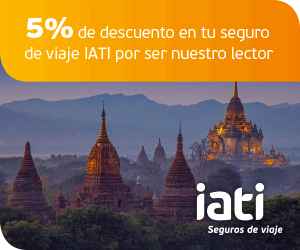Surely if you are reading these lines it is because you are planning your stay in Koyasan. This small and remote town has been one of what has surprised us the most out of everything. what to see in Japan of our tour. Above all because you live a unique experience that you will not be able to experience anywhere else in the world. Below we tell you what we learned from Koyasan, how to get there and our experience at the monks' Ryokan or Shukubo.
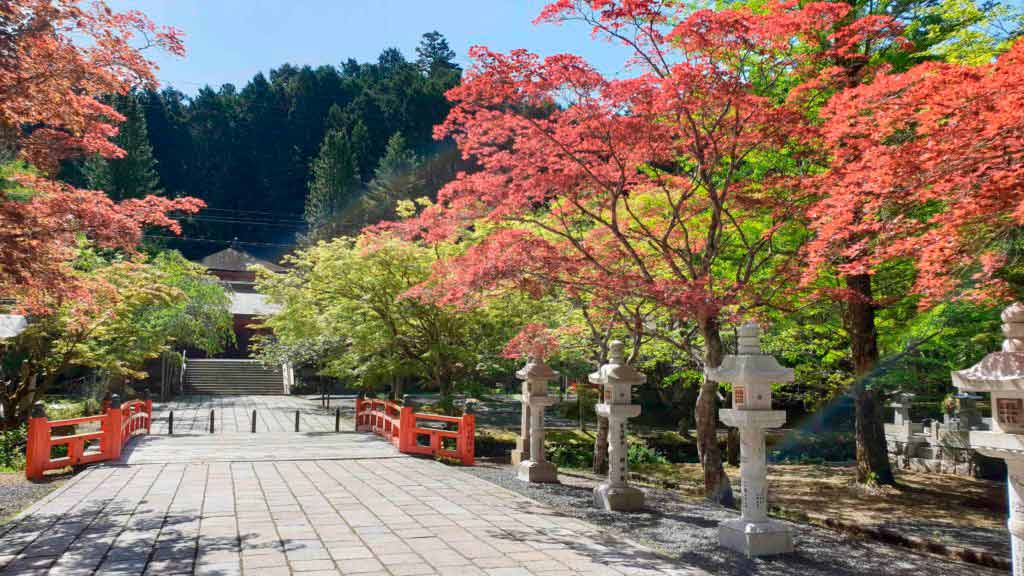
Koyasan, Japan
Koyasan is in the Wayakama prefecture, south of Osaka. At approximately 900 meters above sea level, so it is quite cool. Especially at night. The town is small, you can explore it perfectly on foot. It is about 3 km from north to south and 6 kilometers from east to west. Supposedly the mountain of Koyasan It has a topography that resembles that of an eight-petaled lotus flower.
It was in Koyasan where great Buddhist monk Kobo Daishi Kukai established a center of Buddhist study and practice more than 12 centuries ago. Kobo Daishi's wish was for him to be as far away from the distractions of the cities as possible. And, in this way, he can focus on the practice of Buddhism. Faith in Kobo Daishi has endured for many years, attracting Koyasan pilgrims for more than a thousand years. Besides, in the years 2004 Koyasan It was declared a World Heritage Site by UNESCO.
How to get to Koyasan. World Heritage ticket
if you want to get to Koyasan with your JR Pass It will not be possible, since the train company that makes this route does not belong to JR (Nankai). To reach Koyasan With the JR Pass from any city in Japan it is always advisable to go through Osaka. Here you must take the Loop Line or circular line to Shin-Imamiya Station. This way you can make the most of your JR Pass. Once in Shin-Imamiya you must go to the counter Nankai company and buy your round trip tickets. The price of the ticket including train journey + cable car + station bus Koyasan to the town is about €23 per person. The journey from Osaka is almost 4 hours, but the road is very beautiful and so is the final destination.
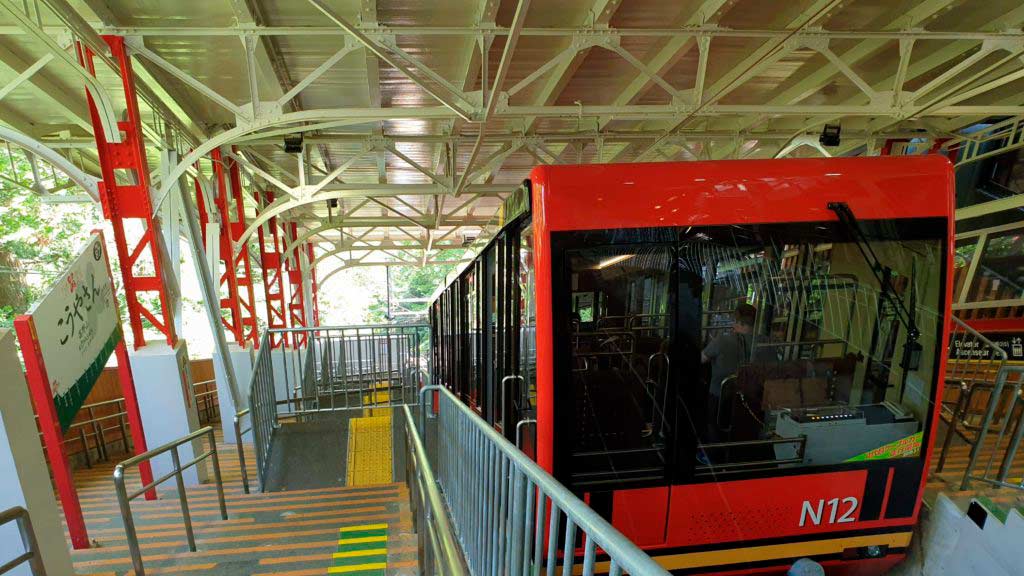
If you are going to stay in Koyasan, make sure the Nankai seller reserves the unlimited bus ticket within the town of Koyasan and to reach the station for 2 days. Please when you arrive too Check with the hotel the bus schedule to return to the station the next day, since there are not many buses. This way you will avoid waiting 1 hour at the stop.
stay in Koyasan. Sleep in a Shukubo or Buddhist temple
What is a Shukubo? A Shukubo is a Ryokan or traditional Japanese accommodation, but experiencing Buddhist practices up close. Equally, In a Shukubo you can try the monks' vegetarian cuisine. That is, without meat or fish. Our stay in Koyasan it was in the Shukubo Jokiin on half board (dinner and breakfast). There are more than 50 Shukubos in Koyasan and the truth is that the experience in Jokiin it was very good. In addition, it is located near the bus stop and the temples. Dinner is delivered to your room between 17:30 p.m. and 18:00 p.m. and at 22:00 p.m. the doors of the temple close.. There is not much nightlife either and it is good to be able to get up early the next day and see how they meditate and pray.
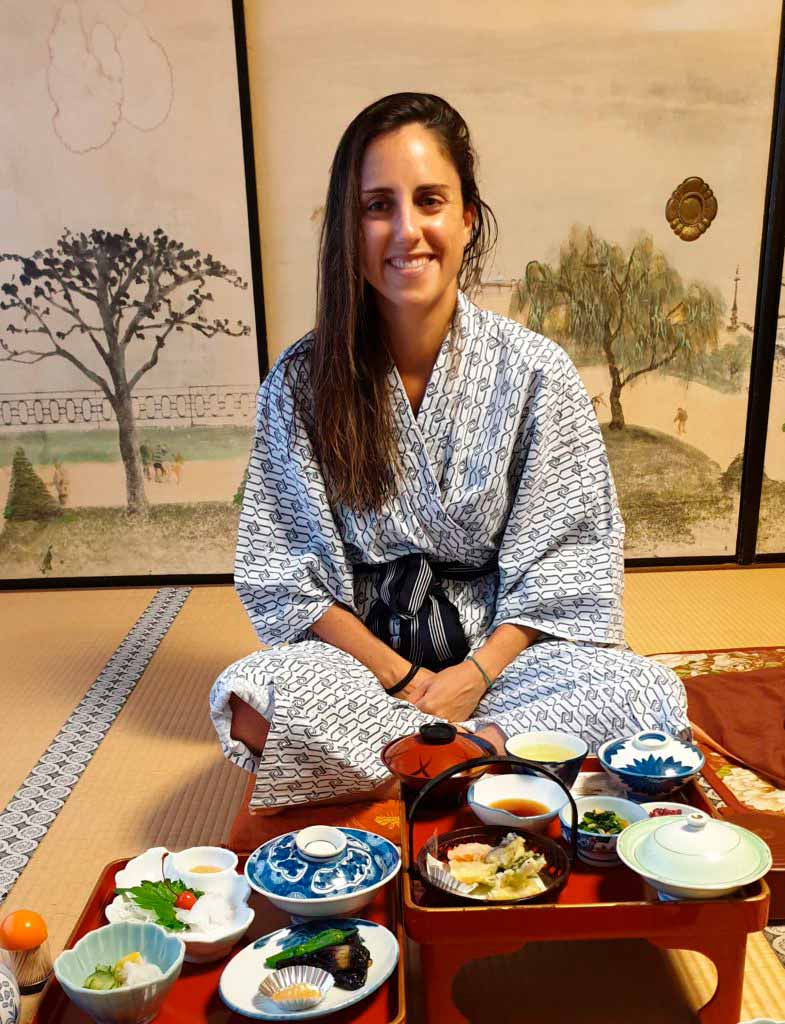
Dinner was delicious and quite filling, so at 22:30 p.m. we were hungry again and couldn't go out. Therefore, Take something to eat in the room. There is a Wall Mart nearby, so don't worry about that. Luckily we had some ammunition in the suitcase to “survive”.
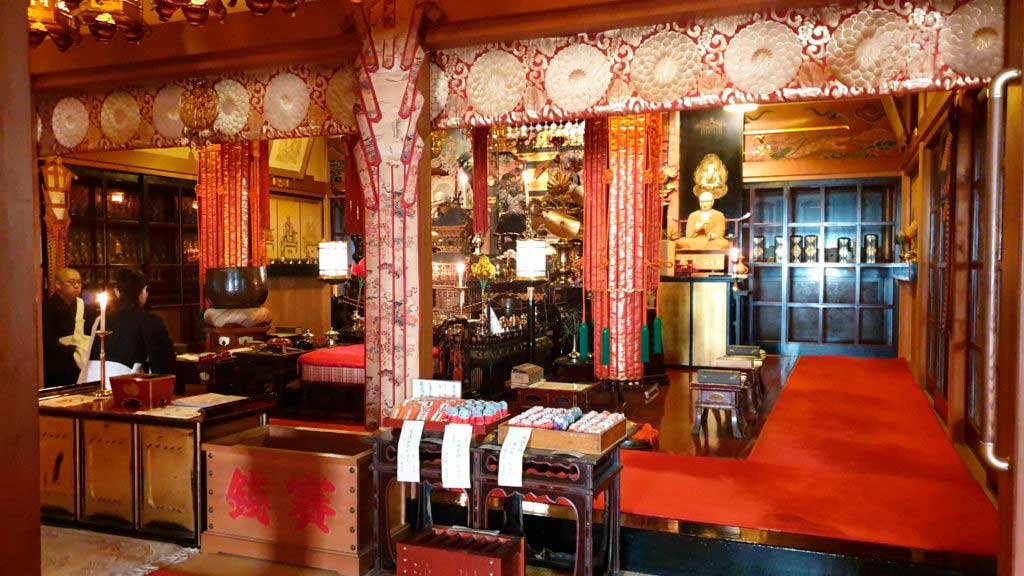
Similarly, if you want to see how they pray in the Jokiin temple, at 6:00 in the morning and for about 30 minutes you will be able to attend your ceremony. A unique experience. Breakfast is at 7:30 in a common room with the rest of the guests. Also quite abundant. As for the bed, you should know that it is on the floor, that is, a real tatami. Don't worry, it's super comfortable. Check here all the shukubos and accommodations Koyasan.
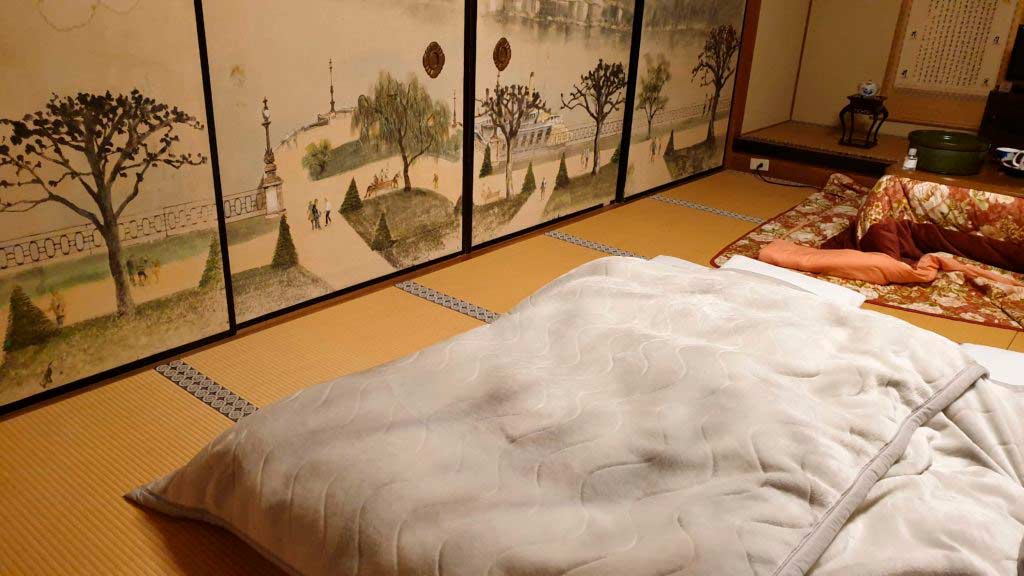
Buddhist Vegetarian Cuisine (Shojin Ryori)
In the Buddhist religion, killing a sentient life is immoral, which is why they are vegetarians. He Shojin Ryori or Buddhist vegetarian cuisine has its origins in China, but Japanese monks have adapted it over the years. According to Buddhist teachings, Shojin Ryori is 100% vegetarian and is based on 5 flavors, 5 types of cooking and 5 colors. That is, all your meals should include a grilled dish, a fried dish, a pickled dish, a tofu dish, and a soup dish. In it Jokiin You will be able to taste this somewhat more elaborate original cuisine.
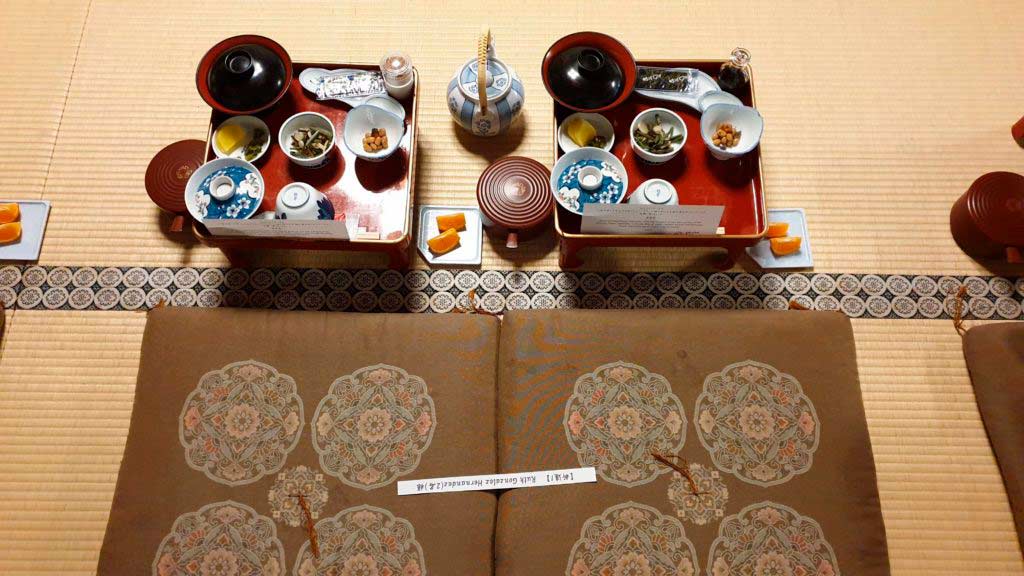
Likewise, inside your room you will find a yukata or traditional japanese kimono. Supposedly it is to wear it to go take a bath in the hot springs or be in your room. Of course, in the bathrooms women go on one side and men on the other. From what you can read, they are totally unique experiences and surely the most memorable over the years.
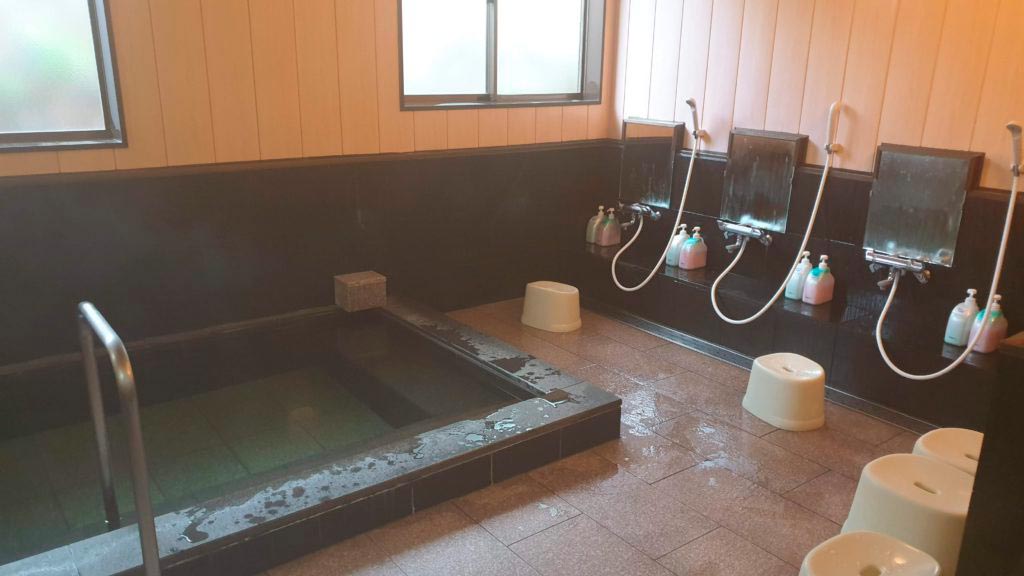
The general treatment in this hotel of Koyasan (so to speak) was very good. The facilities were clean and in good condition. As for the bedrooms, they are private, but the bathroom is shared (very clean and you barely met anyone). In the rooms there is a good WIFI connection, heating and air conditioning. As a welcome they give you a pastry and tea. Of course, the walls are made of paper (as is). Bring earplugs if you have trouble sleeping anywhere and a light mask if you don't plan to get up to watch the prayers.
What to see and do in Koyasan
Below we detail what to visit in Koyasan.
1st. Tour the Okunoin Cemetery, a World Heritage Site
Access is free and from the hotel to the Kobo Daishi Mausoleum it is approximately 1 hour and a half walk each way. However, you can also use the bus service included in the Nankai ticket. The Okunoin cemetery and sacred area extends about 2 kilometers. It is a unique place in the world, surrounded by centuries-old cedars and neither more nor less than 200.000 tombstones and commemorative pagodas.
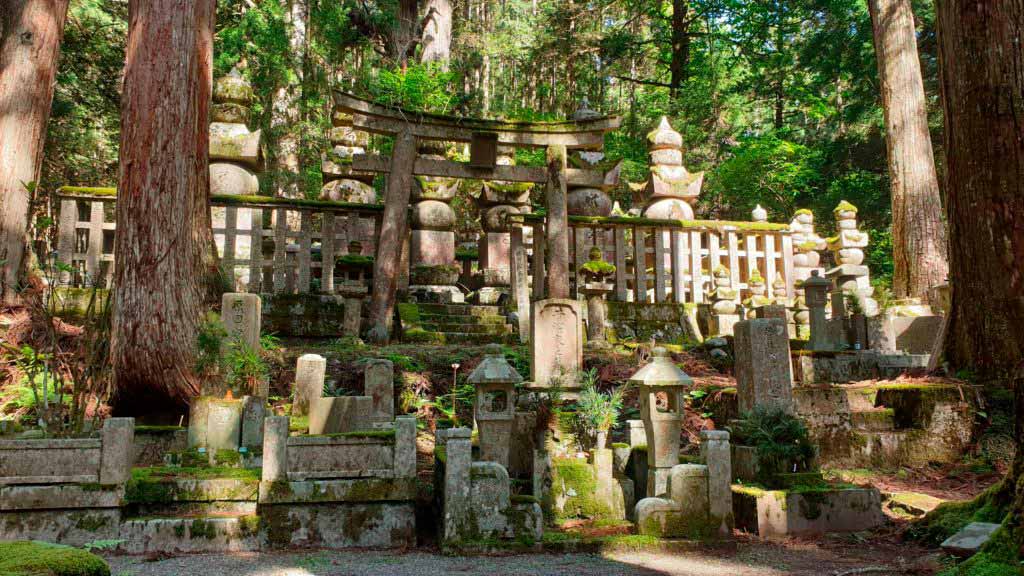
2nd Kobo Daishi Gobyo and Torodo Mausoleum (Lantern Room).
The Mausoleum is the center of Buddhism Koyasan. The environment is spectacular and difficult to express in words. Since taking photos is not allowed, we let you discover it for yourself. Next to it is the lantern room, that is, a prayer chapel in front of the mausoleum.
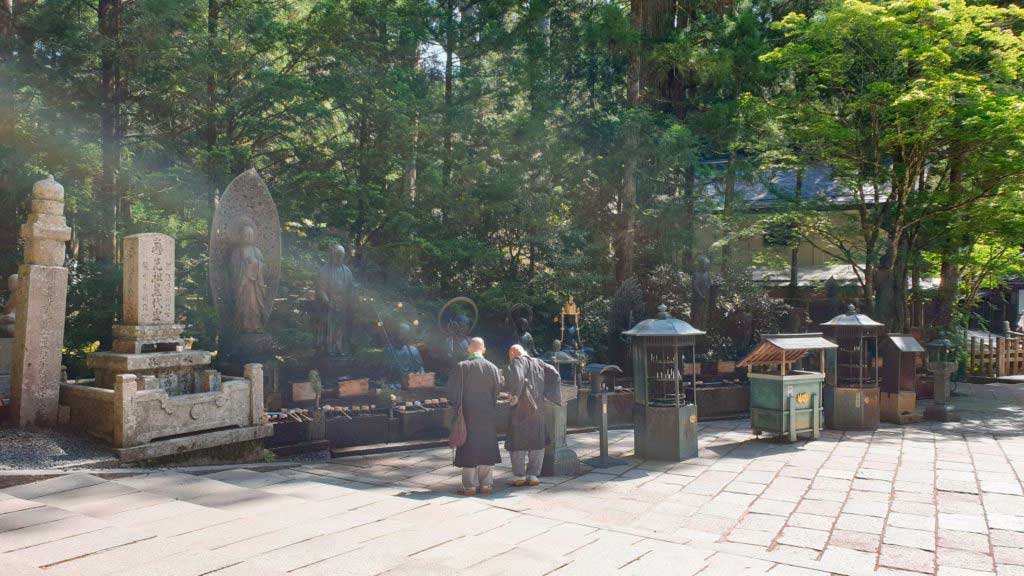
3rd. Visit the main temples.
En Koyasan There are 117 temples, of which 52 offer accommodation. Here you must visit the complex Danjo Garan and the Great Konpon Daito Pagoda. Both a few meters from the Jokiin temple. Be careful, it closes at 16:30 p.m. and you have to pay 200 yen to enter.
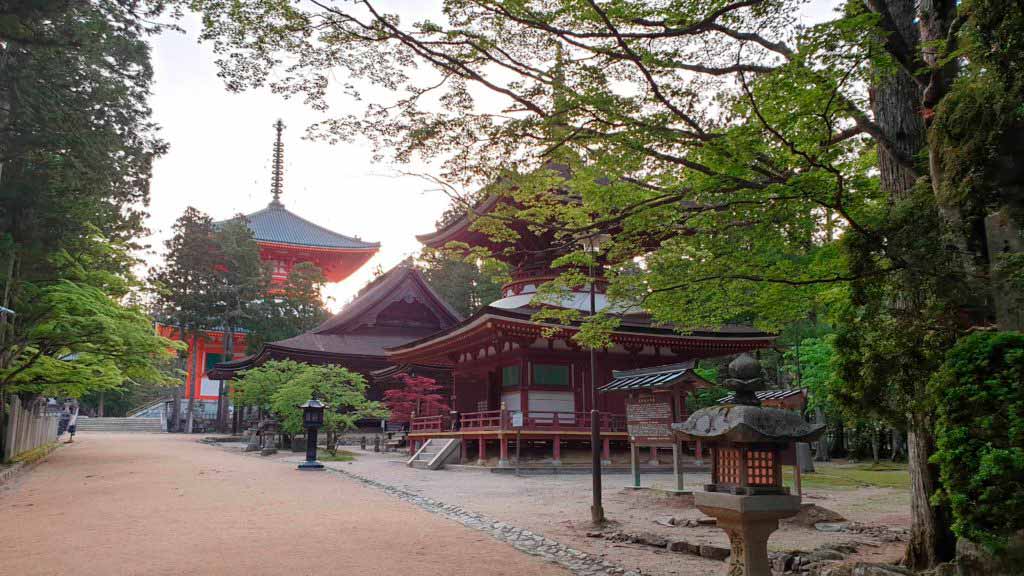
4th. Daimon, sunset and trails.
After the Great Pagoda in the opposite direction back to the hotel, about 100 meters along the road we will reach Daimon, the main gate of Koyasan. From here you can see a beautiful sunset and discover the trails of Koyasan. The door itself is pretty and stays illuminated at night. Be careful, when we went on the surrounding trails, we saw caution notices for the presence of bears!
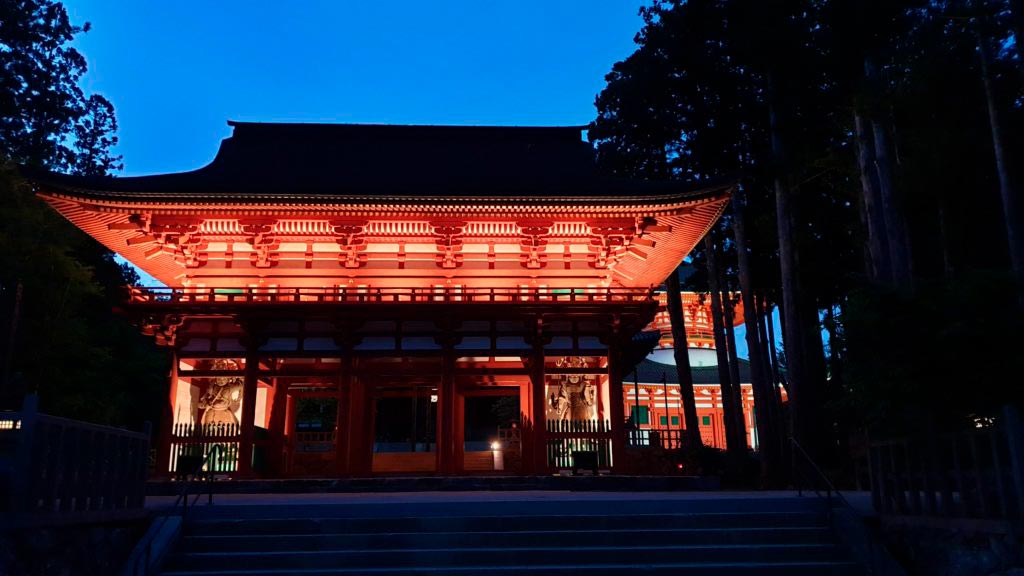
And this we consider to be all you should visit in Koyasan. Also take a look at our article on what to see in Japan in 14 days to see the entire itinerary we did through the Japanese country. If you have any questions, you can leave us a comment, we will be happy to help you. Finally, if you don't have your travel insurance yet, take advantage of the 5% off What IATI gives you for being our reader. You just have to book through the following photo.
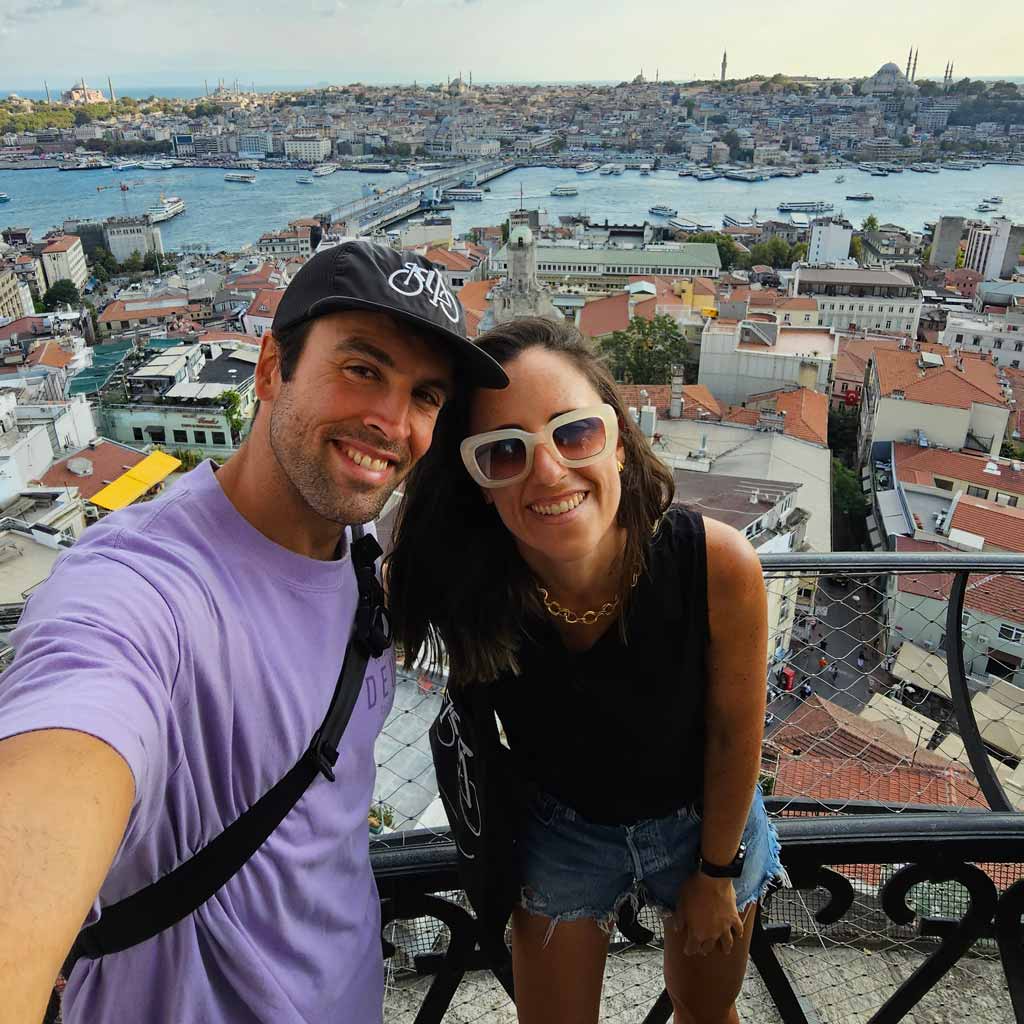
We are Ruth & Jorge, Gran Canarian people with a traveling soul. Experts in tourism and digital marketing. We share the most authentic side of Gran Canaria (where we live) and… our adventures around the world!


